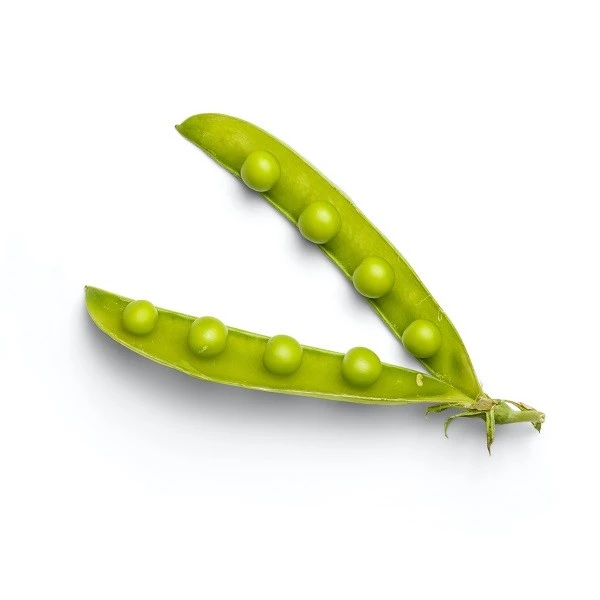Now, if consumers look closely at product labels, pea protein is likely to be the main ingredient in many plant-based meats, as well as energy bars and plant-based snacks. The pea protein market is expected to more than double in size between now and 2028, with most of the growth likely coming from the nutritional supplement industry. But consumer interest in alternative protein products will also create new and growing opportunities for pea protein. In response, Agrifood Technologies is working to optimize technology at every stage, from field cultivation to protein extraction.
Benson Hill, a Missouri-based agtech company, is working to improve pea protein at the most basic level. Last month, the company launched a yellow pea breeding and commercialization program to develop and produce better pea crops. They focused on improving two key attributes: nutrient density and flavor.

Matt Crisp, CEO of Benson Hill, said, “In plant-based protein ingredients, people are most concerned about the actual protein yield.” The current industrial process of extracting protein requires a lot of water and energy, so by increasing the protein content of peas , which is expected to eliminate and simplify some processing steps, which in turn could help reduce production costs.
More protein-rich peas would be more efficient in arable land use. Matt Crisp points out that yellow peas are typically 21-23% protein, and if you can create a variety with 31-33% protein, you don’t need to grow as many crops to get the same protein yield.
Additionally, Matt Crisp points out that pea protein can have an undesired taste profile. Yellow pea varieties, in particular, contain some unacceptable flavor compounds, so some additives, flavor-masking agents, or sodium have to be used in food formulations to mask these flavors. If Benson Hill can produce better-tasting yellow peas, they could help food manufacturers reduce ingredients and produce cleaner alternative protein foods.
Benson Hill uses a platform powered by machine learning and artificial intelligence technologies to guide its breeding efforts. Its software simulates the results of different breeding programs, and then its breeders execute the program with the best simulated results. This technology helps Benson Hill to optimize crop traits through efficient breeding, but not in the areas of gene editing or transgenics that consumers find objectionable.
After the yellow peas are harvested, they need to be hulled and then ground into a powder. The fiber and starch are then removed, and what remains is pea protein.
Merit Functional Foods opened a nearly 9,000-square-meter factory this year to process pea and rapeseed protein. The company uses a proprietary process that requires more heavy filtration steps, so it is more expensive than industry standards, but the final product is purer and has a better taste and texture.
CEO Ryan Bracken said the company is working to develop pea protein ingredients with different flavors, textures and other attributes. “We think plant-based proteins need better quality, higher functionality, and better texture and sensory properties.”
By providing high-quality protein ingredients, Merit Functional Foods hopes to help food manufacturers create the best products in new product development, whether it’s dairy substitutes, meat substitutes, or nutritional products like meal replacements.
Merit Functional Foods, for example, might also look more closely at a protein with strong gelling properties, making it a potential replacement for methylcellulose. Methylcellulose is a thickening and emulsifier commonly found in plant-based meat products. This way, plant-based meat can contain more protein.
Other companies are also investing in pea protein. Earlier this year, ingredient giant Roquette started operations at its brand new pea protein plant in Manitoba, Canada, which it bills as the largest pea protein plant in the world.
In addition, the 2021 China International Pea Conference will also be held in Qingdao on the 23rd and 24th of this month. China’s pea imports have maintained growth for six consecutive years from less than 1 million tons before 2015, and have exceeded 3 million tons by 2020. It is expected that the import volume of peas in 2021 will further increase, of which the import volume of Shandong Province accounts for more than 35% of the national total.
This conference aims to enhance China’s position in the global pea industry chain, promote industrial deep processing, discuss the role of plant-based protein in the food industry and food consumption, and then build a platform for the plant-based protein and plant-based food industry to gather resources and connect All aspects of industry and R&D, production and consumption to promote the development of pea and plant-based industries.
As vegetable protein products begin to be favored by the market, plant raw materials led by pea protein show amazing development potential. Pea protein isn’t the only vegetable protein on the rise, with markets forecasting bright prospects for everything from the ubiquitous soybean to spirulina. Competition in these areas will become more intense, and we may see further investment in new crop and protein extraction technologies; these technologies will optimize feedstocks for different end products.
